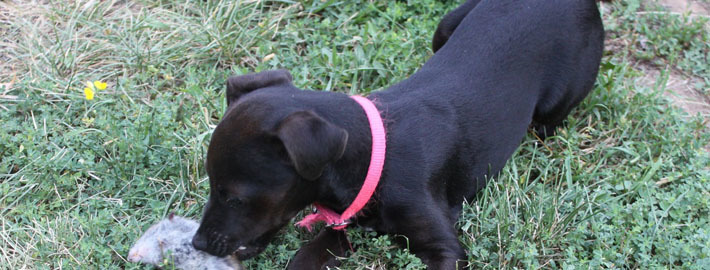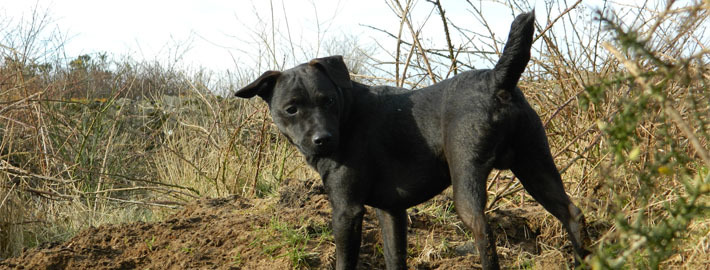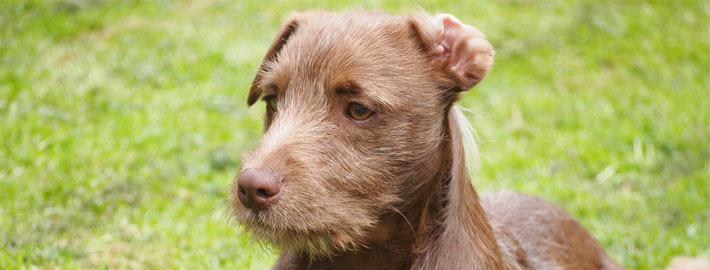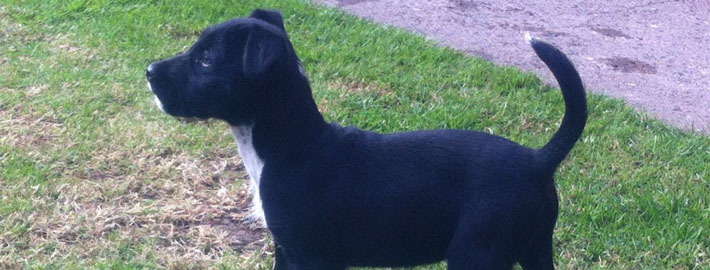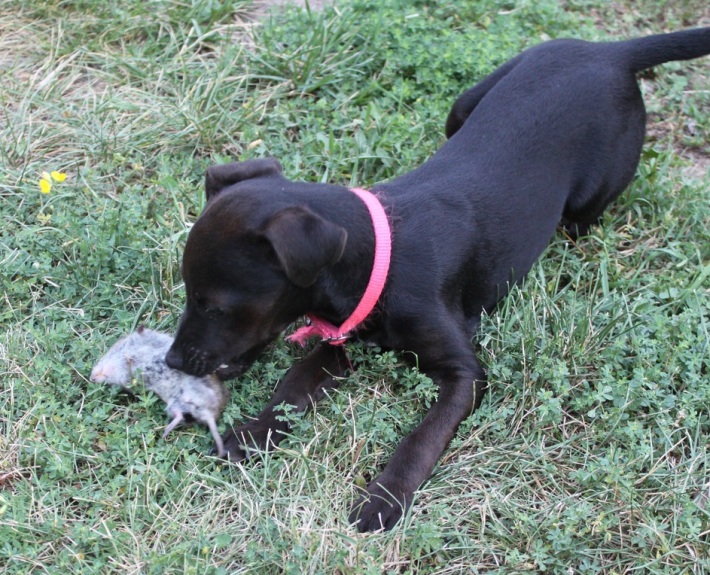What makes the Patterdale Terrier Unique?
The Patterdale Terrier, is an English breed of dog descended from the Northern terrier breeds of the early 20th Century. The origins of the breed can be traced back to the Lake District. Specifically, to Ullswater hunt master Joe Bowman, an early border terrier breeder. The dogs were bred for the hunting and dispatch of the red fox in the rocky fells around the Lake District where a traditional digging dog was not always of great use. However, today this breed of dog excels worldwide not just at hunting a wide array of quarry, but in a number of canine sports, such as agility and terrier racing. This dog is an adaptable all rounder capable of doing any job assigned to him or her. Some notable older, British lines carry the names Buck, Breay, Nuttall, Gould, modern lines Stevens, Harcomb Mason, Powell, Jones … among others.
Breed Groups
Page Contents
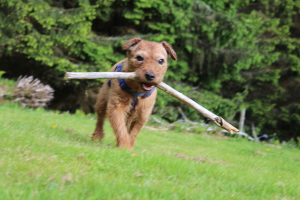
Is the Patterdale Terrier Right For You?
In 5 Words
- Inquisitive
- Bold
- Confident
- Friendly
- Intelligent
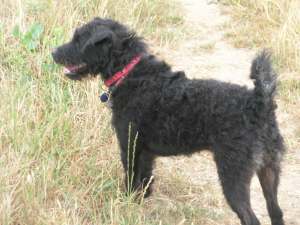
Characteristics
Learn About the Patterdale Terrier
Description
General Description
The Patterdale Terrier is a dog whose breeding was focused on working rather than on looks, and so their appearance can vary. Generally they have a compact body with a level topline, strong, straight legs and a docked high-set tail. The attractive head has a strong muzzle, black nose, dark round eyes and forward-folding ears. Their waterproof coats can be smooth, rough or broken, and the colouring tends to be mostly black or some bronze.
Short History of the Patterdale Terrier
The earliest Patterdales can be traced back to the 1700’s where they lived and worked in the unforgiving climate of Northern England where the tall, bare and exquisite hills are known as Fells. The fells were steep, rocky and loaded with foxes. Patterdales were first called Fell Terriers after this rocky terrain they worked on.
Used to hunt foxes that were a threat to the sheep that were raised there, the Patterdale was the perfect dog for the job. The Fells were so rough that horses could not be used and the Huntsman, his assistants, the hounds and Patterdales would cover many miles of mountainside in a day. They worked very long days and were expected to perform in harsh environmental conditions such a driving rain and freezing temperatures. Tireless, they became very respected working dogs.
The name Patterdale was chosen in honor of a village in Cumbria, where the dogs were common. The Patterdale was also used to hunt rats and rabbits and the dogs were carefully line bred for their working ability.Historians have many stories about the tireless work ethic of these early dogs.
In the early 1950’s, the Patterdale Terrier breed was further developed as the result of the selective breeding efforts of two breeders, Cyril Breay and Frank Buck. For quite a long time, Patterdales were only found in England. In 1978, they were brought to the United States to hunt boar, woodchuck, badgers and raccoons. The Patterdale Terrier Club of America was formed in 1993, and the breed was accepted into England’s United Kennel Club in 1995.
Temperament
Patterdale Terriers are friendly and inquisitive dogs. With high energy levels, they make fine companions and pets, especially for the more active but owners should be aware that while they may enjoy sitting on laps occasionally, they are in no way typical lap dogs. They require training and regular and consistent exercise to ensure they retain even temperaments, otherwise they can bark excessively, be destructive and may even try to escape. Even regular dog chew toys may not be enough to satisfy these dogs. Although they are intelligent, they can be independant and difficult to train, and so are best suited to more experienced dog owners rather than novices. Patterdale Terriers will get along with older, more considerate children they have been raised with, and can be okay with other dogs. However, they tend to be aggressive with cats, and due to their high-prey drives, are not suitable to have around smaller pets such as rabbits and hamsters. They tend to make decent watchdogs.
Caring for Your Patterdale Terrier
General Health
ll owners of dogs and puppies are concerned about the health care of their pets and just as with humans dog health issues arise from time to time. Resolving dog health problems, including those of the Patterdale Terrier, can prove to be costly and it would be wise to consider the benefits of obtaining dog health insurance. Diseases in dogs may occur because of trauma, infection, immune system abnormalities, genetic factors, or degenerative conditions. Common health problems and questions occur in relation to the Bones, Joints, Muscles, Nerves, Ears, Eyes, Teeth and the Mouth. Other, more serious, issues can relate to the Digestive System, Heart & Respiratory Systems, Immune & Blood Systems, Reproduction and Urinary Systems.
.
Grooming & Bathing
Grooming is not much of an issue for the Patterdale Terrier. Since it has a relatively short coat, regular brushing can help to keep it free of debris and from getting matted. You will want to brush him at least once a week just to make sure that the coat stays healthy and bathing should really only be performed on an as needed basis. Many owners actually simply use a dry shampoo or damp cloth to clean the dog regularly.
Exercise & Training
This small-game hunter is a working dog and needs a lot of exercise. Your dog needs to be taken on a daily, brisk, long walk or jog. While out on the walk the dog must be made to heel beside or behind the person holding the lead, as in a dog’s mind the leader leads the way, and that leader needs to be the human. Exercise and a hardy stock of prey are the recommended ways to satisfy his hunting cravings. They are inactive indoors but a bundle of energy outdoors. They love to run and will enjoy going hiking with you.This kind of terrier dog may give you challenging moments in training them. It is mainly because they only have shorter attention span. Any sound or movement can certainly distract them. Hence, it is best to train them to a setting where there are only less possible distractions. Stay firm and positive in training them but this does not mean that you need to be harsh to them.

